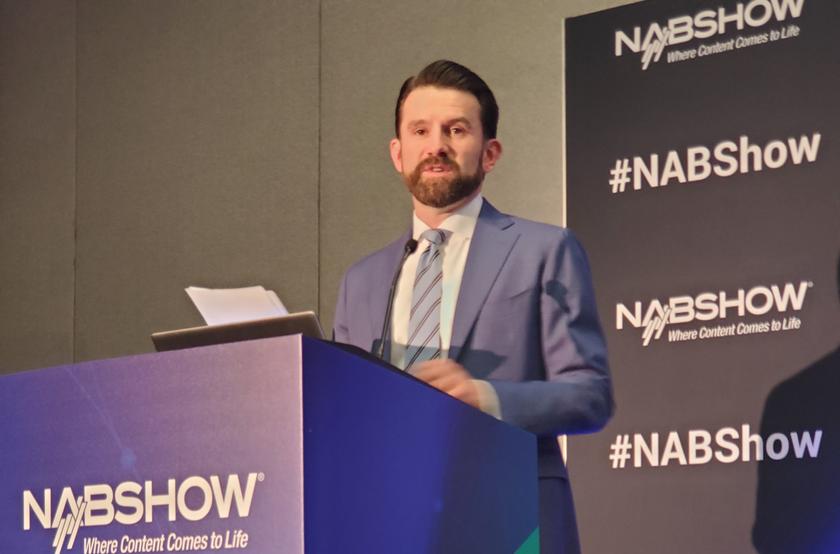Now It’s Up to Us
Nov. 16, 2017 could go down in the annals of the U.S. television broadcast history as a fateful day for our industry. Whether that fate leads to a reinvigoration or the death knell of broadcasting is up to us. With the official approval of ATSC 3.0 aka Next Gen TV, we enter a new era.
To paraphrase the late Tom Petty, the waiting isn’t the hardest part of this transition. Rather it was the development of the standard over the past five years that required the dedication of hundreds of engineers to create the most advanced broadcast standard in the world. But one could also surmise that the hardest part is upon us now—marketing a new technology to a public barely aware of its existence or its potential.

At the 2017 CES, LG introduced new TV sets with dual ATSC 1.0/3.0 tuners for the South Korean market. Will we see them for the U.S. market at the 2018 show next month?
Whatever you think of how the move to DTV was conducted, there was at least an acknowledgement that a government-backed transition was essential to maintaining a system that provided free access to news and information, especially during times of crisis. The ability of broadcast to operate and provide widespread information to the public during emergencies when cellular networks can break down provides an advantage that no other current communications technology can match.
Next Gen TV enters a market saturated by a plethora of media choices, some of which were still on the drawing board when development of the standard began half a decade ago. During the move to digital, broadcasters were required to publicize the transition to the public and had the backing of mandates. Now, apart from certain public service obligations and rules that require duplication of programming and information to maintain a basic service on ATSC 1.0, our industry has a lot more freedom to chart its own course.
After the FCC vote last month, the various groups involved in the development of the standard issued their usual congratulatory comments, but one statement stood out among the others as a precursor to how we could see this transition unfold. LG Electronics, one of the key players in developing the standard, said, “When there is a critical mass of ATSC 3.0 commercial broadcasting in the United States, we will be there.” Likewise, Samsung, which was also involved in the standards process, told TV Technology that “Samsung engineers played a leading role in the development of the standard, and we are well-positioned to implement it in cutting-edge consumer devices as the market develops.”
While it’s no surprise that these consumer electronics giants would take a cautionary approach towards developing ATSC 3.0-compatible devices in the near future, LG’s “critical mass” comment should serve as a warning to broadcasters that the burden is on us to provide the market for ATSC 3.0 and that the technology will have to stand on its merits alone and not rely on government mandates. At this stage “if you build it, they will come” applies more to the consumer electronics manufacturers than it does to consumers.
Will next month’s CES provide any clues on the availability of Next Gen TV devices? Most likely not; as Gary Arlen reports in his show preview, there will be plenty of “meetings” but don’t expect to see much in the way of marketable devices yet. And that makes sense; the future of ATSC 3.0 won’t rely on dedicated hardware products but rather the integration of the service into existing platforms. Despite its promise of higher resolutions and improved audio, the traditional living room television set will not necessarily play a key role in the success of ATSC 3.0.
What will play a key role is local broadcasters who will have to make the decision on whether to get onboard now or wait for the market to develop. Publicizing the potential of ATSC 3.0 will be crucial and it was somewhat disappointing that, at least in Washington, the local television stations decided that the vote for a new standard was not important enough to mention on the evening news.
While FCC Chairman Ajit Pai touted the vote as “historic,” it’s important not to forget the warnings from the dissenting commissioners. Concerns over privacy and a lack of backward compatibility that could require consumers to purchase new TV sets are legitimate and deserve careful consideration. It’s up to us to prove that such concerns will be addressed and resolved over the course of this transition.
In a final note, I would be remiss without acknowledging the individuals who helped lead this massive technological undertaking. There are far too many to mention here but it must be noted that Mark Richer, president of the ATSC and Dr. Richard Chernock, who lead the Technology and Standards Group played critical roles in managing the process and ensuring that deadlines were met. Congratulations to them, the ATSC staff and members and hundreds more involved.
For a comprehensive list of TV Technology’s ATSC 3.0 coverage, see our ATSC3 silo.
Get the TV Tech Newsletter
The professional video industry's #1 source for news, trends and product and tech information. Sign up below.
Tom has covered the broadcast technology market for the past 25 years, including three years handling member communications for the National Association of Broadcasters followed by a year as editor of Video Technology News and DTV Business executive newsletters for Phillips Publishing. In 1999 he launched digitalbroadcasting.com for internet B2B portal Verticalnet. He is also a charter member of the CTA's Academy of Digital TV Pioneers. Since 2001, he has been editor-in-chief of TV Tech (www.tvtech.com), the leading source of news and information on broadcast and related media technology and is a frequent contributor and moderator to the brand’s Tech Leadership events.













